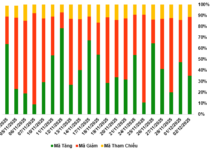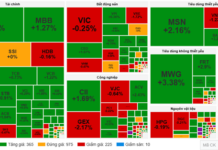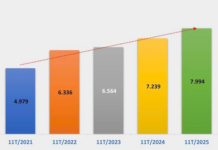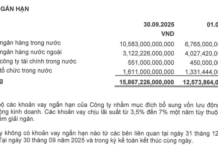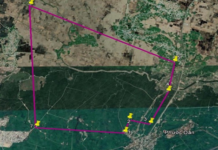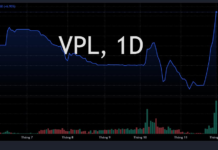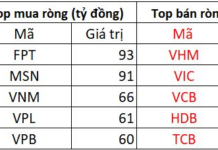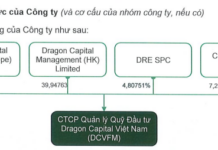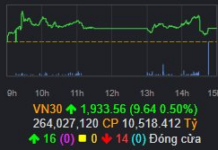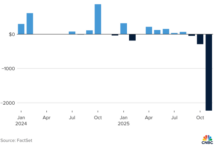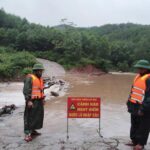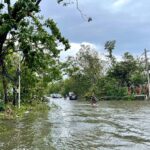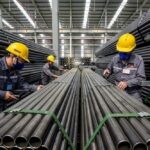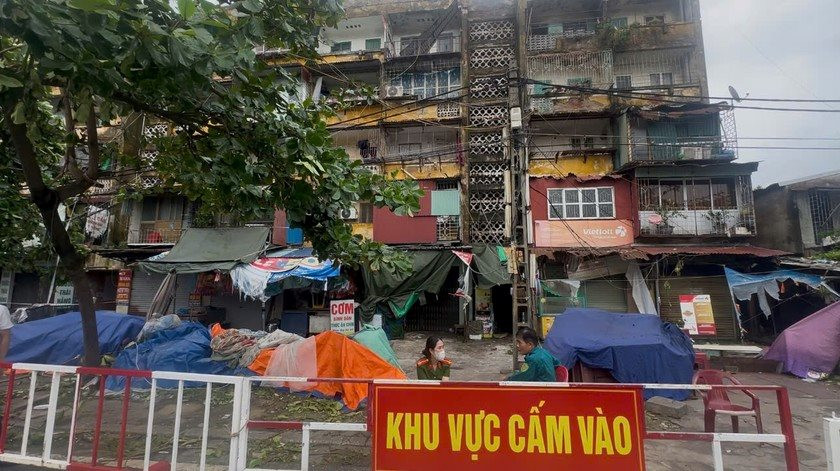
The Yagi storm caused severe damage to the Van My apartment building in Hai Phong.
Old apartments vulnerable to storms
In a recent announcement regarding the implementation of the 2023 Housing Law and Decree 98, Deputy Minister of Construction Nguyen Van Sinh stated that several northern provinces were severely affected by Super Typhoon Yagi, resulting in significant losses of life and property. The Deputy Minister acknowledged reports from several provinces indicating that many old apartment buildings had shown signs of cracking and tilting and were no longer safe for habitation.
In fact, authorities in many localities had to evacuate residents from old apartment buildings ahead of Typhoon No. 3. In Hai Phong, more than 1,000 households comprising 3,000 people living in 10 old apartment buildings in Van My Ward, Ngo Quyen District, were relocated to nearby government offices and schools to avoid the storm. These 10 apartment buildings were constructed between 1975 and 1980, with nine of them in a dangerous condition (grade D) and one in a severely damaged condition (grade C).
In Hanoi, on the evening of September 6, Hoang Mai District authorities evacuated 48 households with 160 people from the old collective housing block A7 in Tan Mai Ward to ensure their safety as the storm approached. This collective housing was built in 1984. The building’s management unit had installed a steel scaffolding system to temporarily reinforce and support the structure, but the risk of collapse remained high, posing a threat to the lives and property of the residents.
According to statistics from the Ministry of Construction, there are currently about 2,500 old apartment buildings constructed before 1994 across the country, with a concentration in Hanoi and Ho Chi Minh City. Many of these buildings, based on inspection results, require renovation or reconstruction.
In Hanoi alone, the Department of Construction reported 1,579 old apartment buildings constructed between 1960 and 1992. Among them, several dozen are facing dangerous conditions at level D but are still inhabited.
The Deputy Minister of Construction requested that the People’s Committees of the provinces and cities take measures to evacuate residents from unsafe and dilapidated old apartment buildings and provide them with temporary accommodations. He also emphasized the need to re-evaluate and assess the quality of these old buildings. For those that require renovation or reconstruction, he urged the inclusion of these projects in the local development plans.
Who is responsible?
According to legal experts, when issues such as leaks, wall cracks, or ceiling collapses occur in apartment buildings, particularly during storms like Typhoon No. 3, there is a potential risk to the safety of the occupants. In such cases, the responsibility of the involved parties will be determined based on the specific circumstances.
For old apartments that have been in use for many years
, if they were previously state-invested and have been assessed as highly dangerous (levels 3 and 4), such as the G6A Thanh Cong and A Ngoc Khanh apartments in Hanoi, and if residents have not evacuated despite the risks, then any unfortunate accidents occurring due to natural disasters will be the responsibility of the residents themselves.
For old apartments that still meet the standards for habitation
, and have not yet been scheduled for demolition and reconstruction, the responsibility for monitoring the quality of the structure rests with the residents, the apartment management board, and the local authorities. If there are signs of deterioration, it is necessary to inform and coordinate with the relevant parties, conduct quality inspections, and develop renovation or relocation plans if necessary.
For newly constructed apartments
, according to lawyer Nguyen Thanh Ha, if there are issues such as wall cracks, leaks, or ceiling collapses, the responsibility may lie with multiple parties, including the investor, contractor, supervision unit, and state management agency.
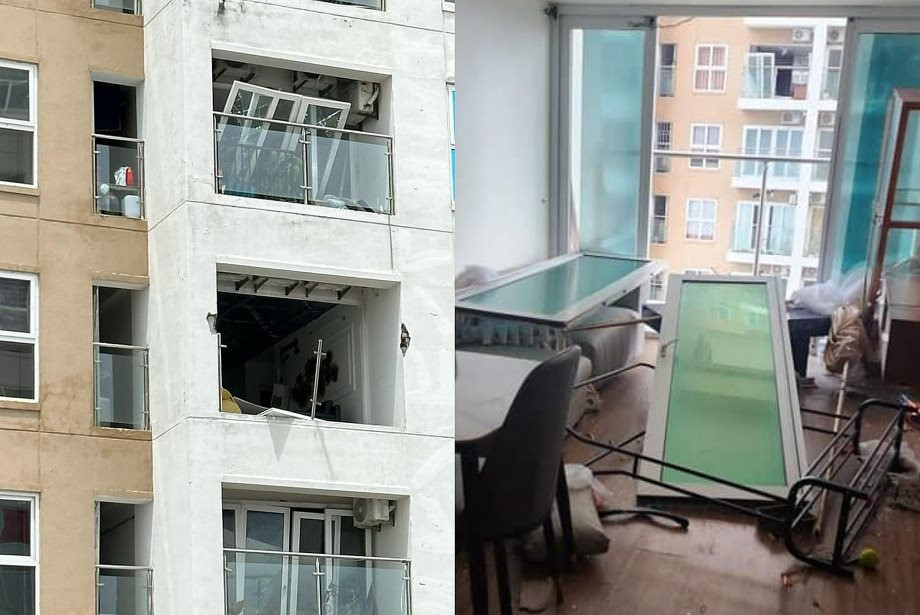
The recent Yagi storm also caused damage to newly constructed apartments, posing safety risks to residents.
In such cases, the primary responsibility lies with the structural design units and the construction contractors. In other words, the construction contractors are responsible for calculating and designing protective structures such as glass doors and walls to withstand wind loads and storm pressures, as well as for constructing them according to approved designs and construction standards.
However, there is currently a situation where construction contractors are allowed to choose their own materials, which can result in substandard quality. After manufacturing and installing glass doors or walls, the contractors can create as-built drawings and have them legalized by submitting them to the design unit for signature.
Additionally, the collapse of ceilings and cracking of walls in newly constructed apartments indicate poor construction and supervision. The supervision unit is responsible for ensuring that the construction process complies with approved technical standards and designs. The occurrence of such issues suggests a lack of rigorous supervision.
Nevertheless, to determine the responsibility of each party in cases of damage, an independent assessment unit should be involved for each affected project. The results of these independent assessments will serve as the basis for assigning responsibility to the involved parties, including the investor, construction contractor, and supervision consultant.
Investors often cite objective reasons, such as weather conditions or natural disasters like Typhoon Yagi, to avoid taking responsibility. In such situations, apartment residents can take the following measures to clarify the responsibilities of the involved parties and protect their own rights:
First, residents should collect evidence of the apartment’s quality issues. They can take photos or videos of damaged areas, such as wall cracks, leaks, or ceiling collapses. This evidence will be crucial for future complaints. Residents should request the apartment management board to establish a record of the issues, with the participation of resident representatives and other relevant parties, if possible.
Second, residents can request the investor or hire an independent inspection unit (such as a construction inspection company or certified experts) to assess the quality of the project and determine the causes of the incidents. The inspection results will help identify whether the issues are due to design flaws or poor construction.
Third, residents should carefully review the apartment purchase contract and legal provisions on apartment management and operation to understand the responsibilities of the investor and the residents. By comparing this information with the actual situation, they can determine the responsibilities of each party.
Fourth, through the apartment management board, which represents the residents, a written request should be sent to the investor to resolve the issues. This request should include evidence of the incidents and a demand for repairs. The request should be sent with a signed receipt or through official channels to serve as a legal basis in case of future dispute resolution.
The Textile Enterprise Resumes Operations Post-Storm Number 3.
According to the Vietnam Textile and Apparel Association, many textile and garment factories resumed production soon after the third storm, with a sense of urgency to stabilize and fulfill signed orders.
The Devastating Impact of Storm No. 4: Flooding, Landslides and Road Disruptions Wreak Havoc in Central Vietnam
As of 5 p.m. on September 19, according to the Department of Dike Management and Disaster Prevention, under the Ministry of Agriculture and Rural Development, heavy flooding caused by Storm No. 4 has resulted in 77 localized areas of inundation and isolation across various central provinces and cities in the region.
“Financial Sector Steps Up to Support Individuals and Businesses Affected by Storm and Flooding”
The banking industry has always been at the forefront of policy response, swiftly adapting and providing accurate and relevant support to businesses and individuals alike.

